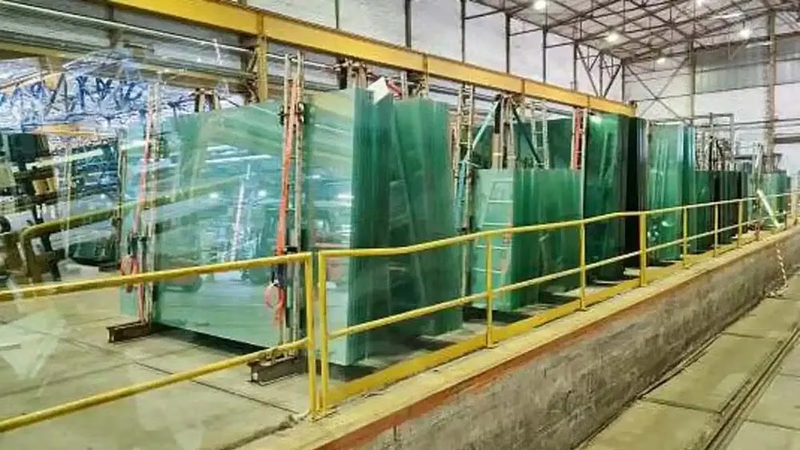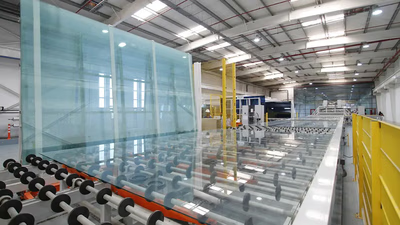
Diverse types of glass products in international trade.
Glass can be considered as an export product. Glass is a material used in various industries, including construction, automotive, packaging, electronics, and interior decoration. Therefore, the production and export of glass products can have an export advantage for a country. As a necessary material in various industries, glass is in high demand in the world market. This demand can help the export of glass. In the glass industry, quality is very important. If a manufacturer can produce high quality glass with desirable properties, it is likely to be able to attract foreign markets. Glass trade may be done in the form of direct export from the producing country to the destination country, or in the form of intermediary trade and transfer of glass from the producing country to other countries. Glass exports are usually carried out as container loads, trucks or sea freight.
The price of glass plays an important role in the world market. If the producer sets a suitable price for his product and competes with other competitors, he can achieve successful export. To export glass on a large scale, the manufacturer must have the ability to produce a large amount of glass. This may vary based on production technology and available resources in the country. The glass industry also needs the ability to innovate and produce new products. Manufacturers who have the ability to provide innovative glasses with special features can compete in the global market.
Industrial glass is glass that is produced for use in various industries such as construction, automotive, electronics, and packaging. This type of glass is available in the form of sheets, laminated sheets, plaques and beams. Flute glass or smooth glass is a glass that is produced in larger and thicker sheets. This type of glass is usually used to produce windows, doors and other high capacity structures. Decorative glass is glass that is produced in the form of sheets or small pieces with different designs and colors. This type of glass is used for interior decoration, decorations and glass arts. Mirror glass is glass that is coated with special methods and has the ability to reflect light. This type of glass is used to make mirrors and reflective surfaces.
Neon glass is a glass that can transmit light and produce neon colors. This type of glass is used to produce facades, advertisement boards and exhibitions. Packaging glass is a glass that is used to package various products such as beverages, food products and perfumes. This type of glass is available in the form of bottles, bottles and various containers. This diversity in dimensions and shapes has created many types of transactions and exports of glass to different countries and industries. Also, such variety of transactions in sizes and shapes has created many types of transactions and exports of glass to different countries and industries. Also, transactions may take the form of international trade in raw glass (sheets, beams), international trade in finished glass products (such as windows, mirrors, bottles and glass containers), or trade in raw materials and equipment related to the glass industry (such as glass manufacturing machinery). be done.
Glass trade is one of the most important industries in world trade, and its volume is affected by various factors, including economic growth, construction, automotive, decorative and packaging industries. However, the exact volume of glass trade in world trade may vary from time to time, depending on market conditions and other factors. To obtain more detailed information on the volume of glass trade in world trade, refer to authoritative sources related to international trade, relevant organizations such as the World Trade Organization (WTO), Organization for Economic Co-operation and Development (OECD), and reports of glass-related industries. These sources usually provide up-to-date and comprehensive data and statistics on the glass trade globally.
-

China leads the global glass industry as the largest producer and exporter, with major companies like China Glass Holdings and Fuyao Glass Industry Group. The United States follows closely, featuring prominent firms such as Owens-Illinois and Corning Inc. Japan, Germany, India, and Italy also play significant roles in glass production, with companies like AGC Inc. , SCHOTT AG, and Asahi India Glass Limited contributing to their respective markets. Key raw materials for glass manufacturing include sand, soda, and sodium carbonate, with China being a major supplier of sand and gravel. The U. S. also has substantial reserves of these materials in states like California and Oregon.
Countries like Russia and Brazil are noted for their rich deposits of sand and gold essential for glass production. Germany is recognized for its technological advancements in producing high-quality glass products, while Japan is known for its innovative methods that yield glasses with exceptional clarity and durability. Sweden and the Czech Republic are also renowned for their artistic glass production, emphasizing craftsmanship alongside technology to create unique designs. The global landscape of the glass industry showcases a blend of traditional craftsmanship and modern technology across various regions.
-

Iran, Turkey, Saudi Arabia, Iraq, and Egypt are key players in the West Asian glass market, producing a variety of glass products including construction and automotive glass. These countries benefit from abundant natural resources like minerals and sand, enabling cost-effective production. The region"s strong domestic demand is driven by rapid industrial growth and construction activities. Investments in advanced production technologies have enhanced productivity and reduced costs, while also focusing on export markets to boost global competitiveness. Innovations such as thermal insulation and anti-theft glass have emerged, improving energy efficiency and safety. Despite facing challenges related to raw material quality and production standards, the Middle East"s glass industry is evolving through research and development efforts aimed at enhancing product performance. As manufacturers continue to adopt modern techniques, the region is poised to compete with established global players in terms of quality.
-

Entering the glass export market requires thorough research on demand, competition, pricing, and customer needs. Understanding target markets and competitors is crucial for developing effective marketing strategies. Key markets for glass exports include the European Union, the United States, China, India, and the Persian Gulf countries. These regions show significant demand for various glass products such as construction glass and automotive glass. Additionally, emerging markets like Brazil, Russia, and African nations present opportunities due to their economic growth. Building long-term relationships with customers is essential; this includes providing after-sales services and maintaining effective communication. Business skills in financial management, supply chain management, and negotiation are vital for success in the global market. Compliance with international trade laws and standards is necessary to ensure product quality and safety.
Collaborating with industry organizations can enhance credibility and provide valuable market insights. Investing in research and development is also critical to innovate processes and products, ultimately attracting new customers.
-

Glass is a vital export product utilized across various industries, including construction, automotive, packaging, and electronics. The global demand for high-quality glass presents significant export opportunities for manufacturers. Successful exporters must focus on producing quality glass and setting competitive prices to attract foreign markets. The trade can occur through direct exports or intermediary channels, with shipments typically made via container loads or sea freight. Innovation in product offerings is crucial; manufacturers who develop unique glass types can enhance their competitiveness. Various forms of glass are traded internationally, including industrial glass for construction and automotive uses, decorative glass for interior design, mirror glass for reflective surfaces, neon glass for advertising, and packaging glass for consumer goods. The diversity in shapes and sizes of glass products facilitates numerous transactions across different countries and industries. Factors such as economic growth and industry demands significantly influence the volume of global glass trade. For precise data on the current state of the glass trade market, consulting authoritative sources like the WTO or OECD is recommended.




